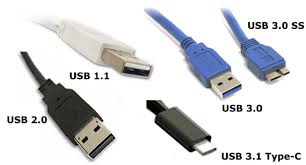Now-a-days you need to be well informed about the devices you have and what kind of USB cables work with. USB cables have changed the way we view technology, especially since it is not necessary to be so careful with them because they used to have to be with the cables and ports. Since these cables are used as universal, it can be difficult to know which ones you need, but in most cases the adapters can easily solve energy problems.
Most of the USB cables have both two sides. One side is the A side is port and a port B. Port A is the power port, and that is connected to the power source to transfer power to your device. A port is the only port that can pull energy from a device. The port B is the side of the USB cable that transfers energy to the device. This is the port that varies in size. The problem usually comes when the port B is different from the device that needs power. Although new innovations are always on the road, then the B ports are commonly known and vary by the amount of energy and data can be transferred.
Micro USB cables: These are increasingly common and are used for feeding small items like cell phones.
Mini USB cables: These types have limited capacity and are usually used to carry things like cameras and some portable game systems.
On the Go USB Cables: They are the only USB connectors having a single port, but can be used for sending data and receiving data. For example, the cable Go (OTG) could allow you to download data from your computer, but you can also transfer the data to your cell phone using the same cables.
Numbers and USB Cables
The numbers on USB cables can provide information as to the amount of data and power cable can generate. They range from 1.0 to 3.0 with the lowest number that provides the smallest power capacity and amount of data.
Adapters: One of the best things about these cables is the ability to adapt from one port to another. Instead of buying a whole new cable to power a device, you can simply put an adapter to manage power and data accurately. You do not have to worry about surges because the adapters properly manage energy.
If you want to make the most of its USB cable and you do not want to buy a variety of cables, it is best to buy only USB 3.0 cables with adapters for devices used. 3.0 USB cables allow the most power and data transfer buffer problems. Since the USB 3.0 can derive most of the energy of a device, but only send as much power as the adapter or device required, there will be problems with power surges or data failure.
The information has been shared on behalf of Global Connector Technology, is a leading supplier of standard and custom interconnect products including USB 2.0 and USB 3.0 Full Size, Mini and Micro USB Connectors.
